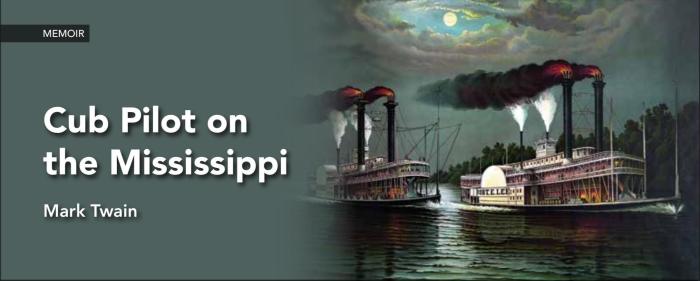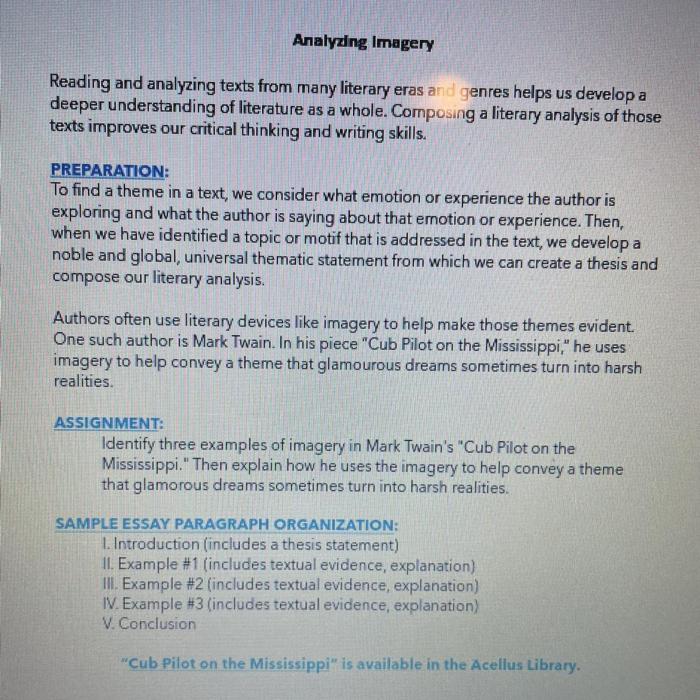Cub pilot on the mississippi – Step into the world of cub pilots on the Mississippi River, where the mighty waters tested their skills and forged their spirits. From the bustling ports to the treacherous currents, these young navigators played a crucial role in the transportation and trade that shaped the American frontier.
Their journey began with rigorous training, where they mastered the river’s currents and hazards under the watchful eyes of experienced mentors. Apprenticeship and mentorship were essential, shaping their skills and preparing them for the challenges that lay ahead.
Historical Context

The Mississippi River, a lifeline of the American Midwest, played a pivotal role in the 19th century. Its vast network of tributaries and central location made it a crucial waterway for transportation, trade, and westward expansion.
The advent of steamboats revolutionized river navigation, enabling the efficient movement of goods and people. These vessels, with their powerful engines and shallow drafts, could navigate the Mississippi’s treacherous currents and sandbars. Steamboats became the primary means of transporting agricultural products, manufactured goods, and immigrants seeking new opportunities in the West.
Cub Pilots
Navigating the Mississippi River was a perilous task, and the role of cub pilots was essential. These young apprentices, under the guidance of experienced river pilots, learned the intricate art of reading the river’s currents, sandbars, and other hazards. Cub pilots spent countless hours on the river, studying its ever-changing landscape and mastering the skills necessary to safely guide steamboats through its treacherous waters.
Training and Skills

Cub pilots underwent a rigorous training process to master the Mississippi River’s currents and hazards. They began as apprentices, learning from experienced pilots who guided them through the river’s treacherous waters. Through hands-on experience and close observation, apprentices absorbed the knowledge and skills necessary to navigate the river safely.
Apprenticeship and Mentorship
Apprenticeship was the cornerstone of cub pilot training. Young men seeking to become pilots would attach themselves to an experienced pilot, serving as their assistants and learning from their expertise. They performed various tasks, such as steering the boat, sounding the river’s depth, and assisting with cargo loading and unloading.
In the untamed waters of the Mississippi, a cub pilot’s journey echoed the perilous adventures of Lord of the Flies. Lord of the Flies trivia reveals the symbolic depths of William Golding’s novel, just as the Mississippi’s shifting currents unveiled the complexities of a young pilot’s passage.
Over time, apprentices gained a deep understanding of the river’s currents, sandbars, and other hazards.
Challenges and Responsibilities, Cub pilot on the mississippi
During their early years on the river, cub pilots faced numerous challenges and responsibilities. They had to master the art of steering a boat in swiftly flowing currents, often in darkness or fog. They also needed to develop a keen sense of the river’s depth and be able to anticipate changes in water levels.
Additionally, cub pilots were responsible for the safety of the boat, its crew, and cargo, which required constant vigilance and quick decision-making.
Life on the River

Cub pilots on steamboats faced a demanding and often perilous existence. Their daily routine was dictated by the unforgiving rhythm of the river, and their living conditions were often cramped and uncomfortable. However, they also shared a strong sense of camaraderie and mutual support, which helped them overcome the challenges of their profession.
Daily Routine
Cub pilots typically worked 12-hour shifts, alternating between day and night duty. During their shifts, they were responsible for steering the steamboat, keeping a lookout for hazards, and maintaining a constant watch on the river’s ever-changing currents and sandbars. When they were not on duty, they were expected to study the river charts and learn the intricacies of the waterway.
This constant cycle of work and study left little time for relaxation or socializing.
Living Conditions
Cub pilots lived in cramped quarters on the steamboat, often sharing a small cabin with several other crew members. The cabins were typically hot and stuffy in the summer and cold and drafty in the winter. The food was often bland and repetitive, and the water supply was sometimes contaminated.
Despite these hardships, the cub pilots developed a strong sense of community and camaraderie. They shared their meals, stories, and dreams, and they looked out for one another in times of danger.
Social Dynamics
The social dynamics on a steamboat were complex and hierarchical. The captain was the undisputed master of the vessel, and his word was law. The pilots were next in rank, followed by the engineers, firemen, and deckhands. Cub pilots were at the bottom of the hierarchy, but they were also essential members of the crew.
They were the eyes and ears of the steamboat, and their skill and knowledge were vital to the safety of the vessel and its passengers.
Dangers and Hardships
Cub pilots faced a number of dangers and hardships during their long voyages. The river was a treacherous and unforgiving environment, and accidents were common. Steamboats could collide with other vessels, run aground on sandbars, or be caught in storms.
Cub pilots were also at risk of being attacked by pirates or robbers. Despite these dangers, the cub pilots remained dedicated to their profession. They knew that the river was a dangerous place, but they also knew that it was a place of opportunity.
With hard work and perseverance, they could earn a good living and achieve their dreams of becoming full-fledged pilots.
Cultural Impact: Cub Pilot On The Mississippi

The arduous and transformative experiences of cub pilots on the Mississippi River profoundly shaped their perspectives and values. The river’s unpredictable currents, treacherous snags, and ever-changing landscapes instilled in them a deep respect for nature’s power and a heightened awareness of their own vulnerability.
They developed a keen sense of observation, an unwavering determination, and a remarkable ability to adapt to changing circumstances.
Literary and Artistic Representations
Cub pilots have captured the imagination of American writers and artists for centuries. Mark Twain’s classic novel, “The Adventures of Huckleberry Finn,” features a young cub pilot named Jim who navigates the river with Huck. Other notable literary works that depict cub pilots include “Life on the Mississippi” by Twain and “Roughing It” by Samuel Clemens.
Cub pilots have also been immortalized in paintings, such as George Caleb Bingham’s “The Jolly Flatboatmen” and Winslow Homer’s “The Mississippi Raftsmen.”
Enduring Legacy
The legacy of cub pilots endures as symbols of adventure, resilience, and the American frontier spirit. Their stories of navigating treacherous waters and overcoming adversity have inspired generations of Americans. Cub pilots embody the indomitable spirit of exploration and the pursuit of opportunity that has defined the American character.
Their contributions to the development of transportation and commerce have left an indelible mark on American history and culture.
Questions Often Asked
What was the significance of cub pilots on the Mississippi River?
Cub pilots played a vital role in navigating the treacherous waters of the Mississippi River, ensuring the safe passage of steamboats and their cargo.
How did cub pilots train for their role?
Cub pilots underwent a rigorous training process that involved apprenticeship and mentorship, mastering the river’s currents and hazards under the guidance of experienced pilots.
What were the challenges faced by cub pilots?
Cub pilots faced numerous challenges, including navigating treacherous currents, avoiding sandbars and snags, and handling the demanding work schedules and living conditions on steamboats.

